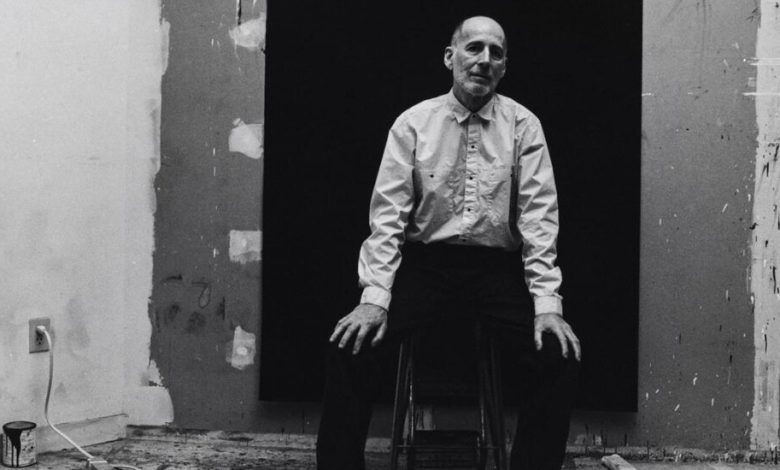Robert Moskowitz, Abstract Painter of New York’s Skyscrapers, Dies at 88

Robert Moskowitz, a painter who used the New York City skyline to stake out a unique position on the border of abstraction and representation, died on Sunday in Manhattan. He was 88.
His son, Erik Moskowitz, said the cause of death, at a hospital, was complications of Parkinson’s disease.
Mr. Moskowitz first came to broad notice with collagelike paintings in which he glued window shades to canvases that had been painted various shades of off-white. Some of these works, which evoke stripped-down Rauschenbergs, were exhibited in the 1961 Museum of Modern Art show “The Art of Assemblage.” He later made a series of similar collages with envelopes.
From the mid-1960s into the ’70s, after an interlude painting Surreal interiors, Mr. Moskowitz settled on views of empty corners, which again flirted with the limits of legibility — they were usually one color, sometimes even black on black.
He also experimented with shapes that were easily recognized but of ambiguous status, like a smiley face or a white swastika on a black background; made a pastel version of Piet Mondrian’s own very minimal “Red Mill,” as well as an oil paint version in black; riffed on Rodin, Giacometti and a 2,500-year-old fresco known as “Tomb of the Diver” in Paestum, Italy; and painted a peculiar view of the Wrigley Building in Chicago, inspired by a souvenir matchbook, in which the building’s two white towers seem to be falling through space.
Even at their most high-concept or severe, though, Mr. Moskowitz’s paintings were always more expressive than he let on. However flat and endless a given field of brown or yellow might be, the works were always constructed with vibrant brushwork and a kind of quiet glee at odds with his stark aesthetic. Mr. Moskowitz’s gallery, Peter Freeman, Inc., which had just begun to represent him and opened their first show with him shortly before he died, called him, in a statement, “a rare bridge between Abstract Expressionism and Minimalism.”
